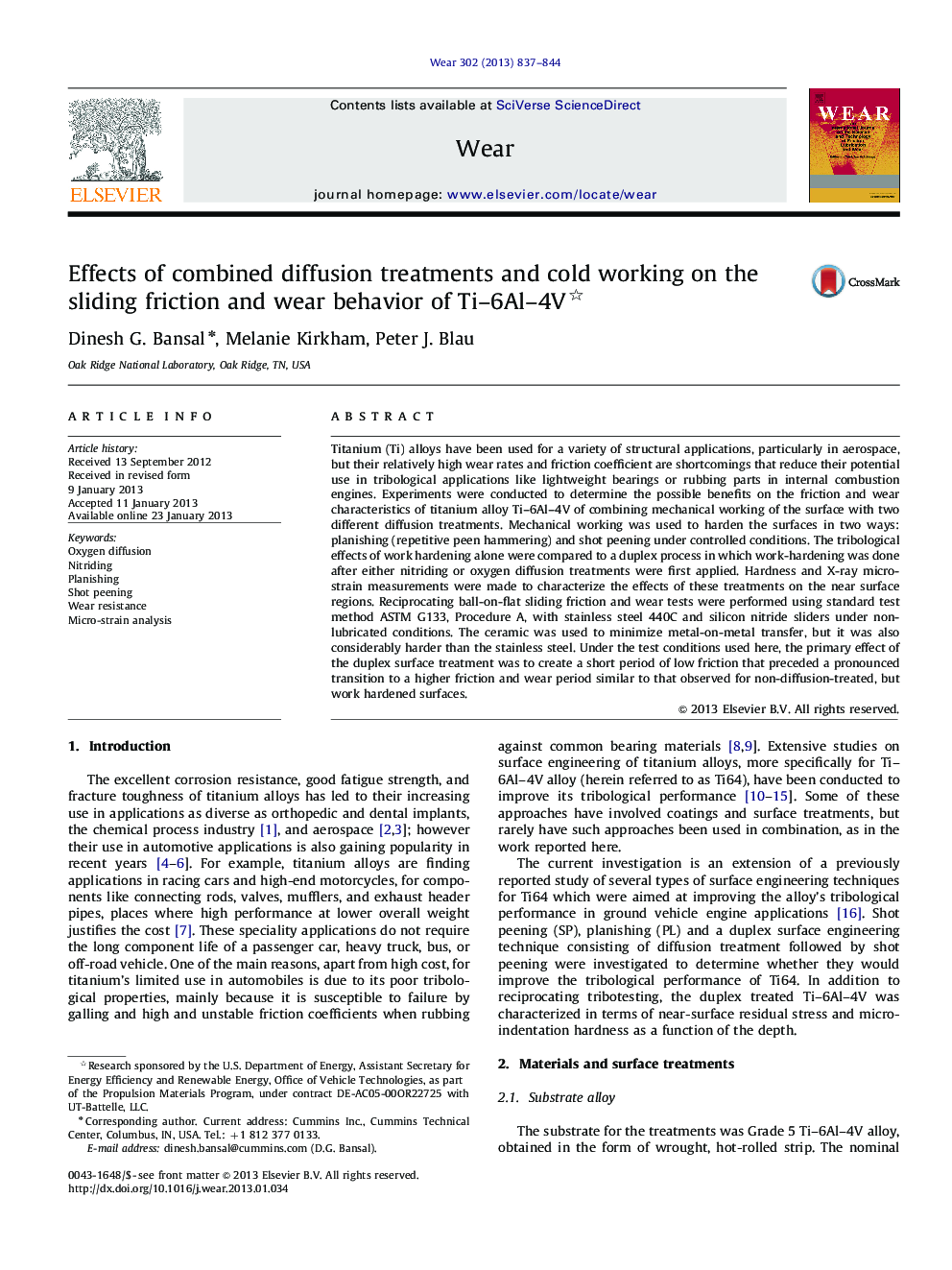| Article ID | Journal | Published Year | Pages | File Type |
|---|---|---|---|---|
| 617660 | Wear | 2013 | 8 Pages |
Abstract
Titanium (Ti) alloys have been used for a variety of structural applications, particularly in aerospace, but their relatively high wear rates and friction coefficient are shortcomings that reduce their potential use in tribological applications like lightweight bearings or rubbing parts in internal combustion engines. Experiments were conducted to determine the possible benefits on the friction and wear characteristics of titanium alloy Ti-6Al-4V of combining mechanical working of the surface with two different diffusion treatments. Mechanical working was used to harden the surfaces in two ways: planishing (repetitive peen hammering) and shot peening under controlled conditions. The tribological effects of work hardening alone were compared to a duplex process in which work-hardening was done after either nitriding or oxygen diffusion treatments were first applied. Hardness and X-ray micro-strain measurements were made to characterize the effects of these treatments on the near surface regions. Reciprocating ball-on-flat sliding friction and wear tests were performed using standard test method ASTM G133, Procedure A, with stainless steel 440C and silicon nitride sliders under non-lubricated conditions. The ceramic was used to minimize metal-on-metal transfer, but it was also considerably harder than the stainless steel. Under the test conditions used here, the primary effect of the duplex surface treatment was to create a short period of low friction that preceded a pronounced transition to a higher friction and wear period similar to that observed for non-diffusion-treated, but work hardened surfaces.
Related Topics
Physical Sciences and Engineering
Chemical Engineering
Colloid and Surface Chemistry
Authors
Dinesh G. Bansal, Melanie Kirkham, Peter J. Blau,
